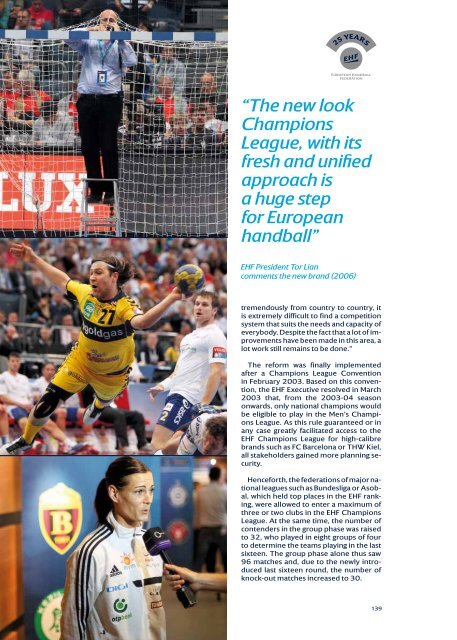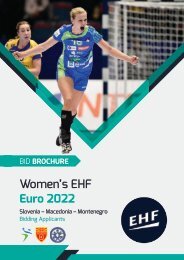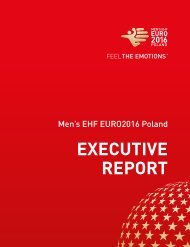ehf_25yers_book_webversion
Create successful ePaper yourself
Turn your PDF publications into a flip-book with our unique Google optimized e-Paper software.
“The new look<br />
Champions<br />
League, with its<br />
fresh and unified<br />
approach is<br />
a huge step<br />
for European<br />
handball”<br />
EHF President Tor Lian<br />
comments the new brand (2006)<br />
tremendously from country to country, it<br />
is extremely difficult to find a competition<br />
system that suits the needs and capacity of<br />
everybody. Despite the fact that a lot of improvements<br />
have been made in this area, a<br />
lot work still remains to be done.”<br />
The reform was finally implemented<br />
after a Champions League Convention<br />
in February 2003. Based on this convention,<br />
the EHF Executive resolved in March<br />
2003 that, from the 2003-04 season<br />
onwards, only national champions would<br />
be eligible to play in the Men’s Champions<br />
League. As this rule guaranteed or in<br />
any case greatly facilitated access to the<br />
EHF Champions League for high-calibre<br />
brands such as FC Barcelona or THW Kiel,<br />
all stakeholders gained more planning security.<br />
Henceforth, the federations of major national<br />
leagues such as Bundesliga or Asobal,<br />
which held top places in the EHF ranking,<br />
were allowed to enter a maximum of<br />
three or two clubs in the EHF Champions<br />
League. At the same time, the number of<br />
contenders in the group phase was raised<br />
to 32, who played in eight groups of four<br />
to determine the teams playing in the last<br />
sixteen. The group phase alone thus saw<br />
96 matches and, due to the newly introduced<br />
last sixteen round, the number of<br />
knock-out matches increased to 30.<br />
139














